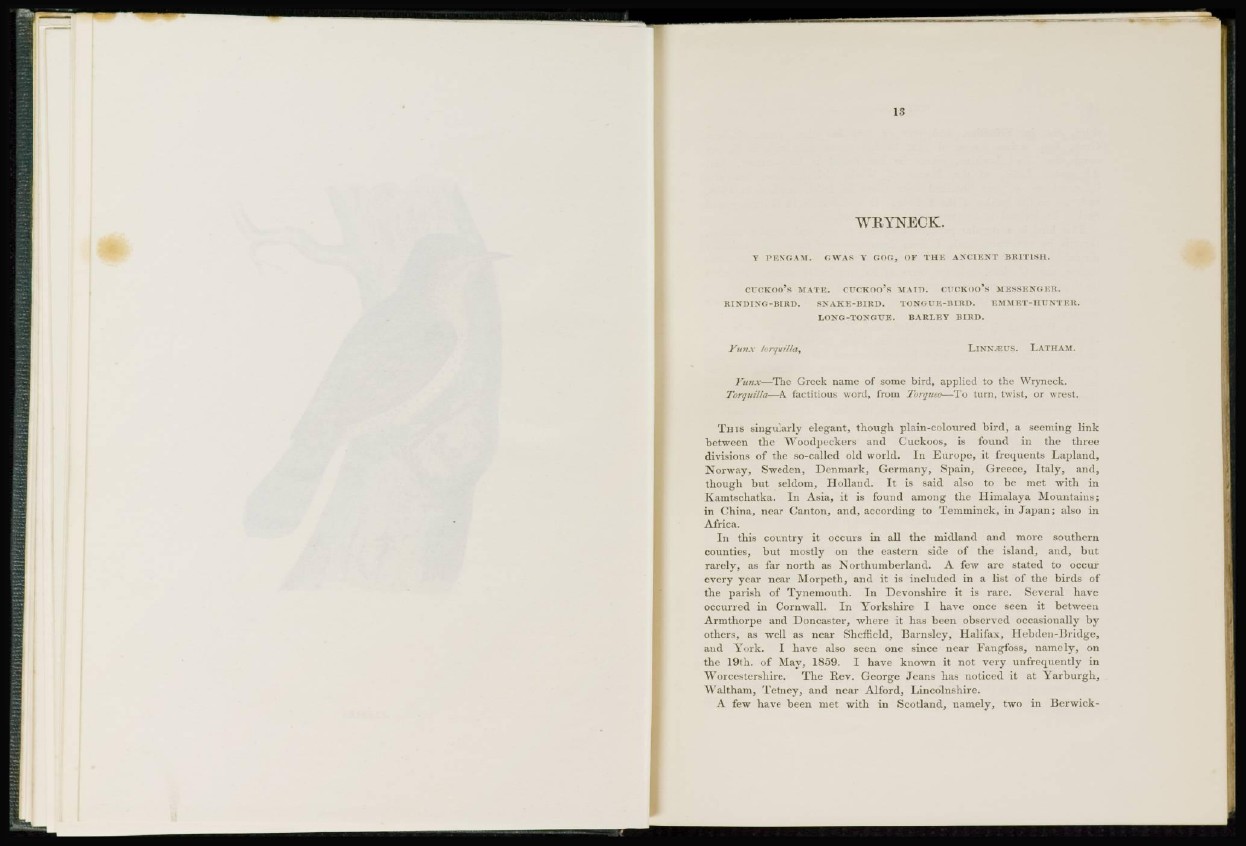
1.5
WRYNECK.
Y PEN GAM. GWAS Y GOG, OF THE ANCIENT BRITISH.
CUCKOO'S MATE, CUCKOO'S MAID, CUCKOO'S MESSENGER.
RINDING-BIRD. SNAKK-BIHD. TONGUE-BIRD. EMMET-HUNTER.
LONG-TONGUE. BARLEY BIRD.
Yunx torquillat LINNJEUS. LATHAM.
Yunx—The Greek name of some bird, applied to the Wryneck.
TorqmUa—A factitious word, from Torqueo—To turn, twist, or wrest.
THIS singularly elegant, though, plain-coloured bird, a seeming link
between the Woodpeckers and Cuckoos, is found in the three
divisions of the so-called old world. In Europe, it frequents Lapland,
Norway, Sweden, Denmark, Germany, Spain, Greece, Italy, and,
though but seldom, Holland. It is said also to be met with in
Kamtschatka. In Asia, it is found among the Himalaya Mountains;
in China, near Canton, and, according to Temminck, in Japan; also in
Africa.
In this country it occurs in all the midland and more southern
counties, but mostly on the eastern side of the island, and, but
rarely, as far north as Northumberland. A few are stated to occur
every year near Morpeth, and it is included in a list of the birds of
the parish of Tynemouth. In Devonshire it is rare. Several have
occurred in Cornwall. In Yorkshire I have once seen it between
Armthorpe and Doncaster, where it has been observed occasionally by
others, as well as near Sheffield, Barnslcy, Halifax, Hebden-Bridge,
and York. I have also seen one since near Fangfoss, namely, on
the 19th. of May, 1859. I have known it not very unfrequently in
Worcestershire. The Rev. George Jeans has noticed it at Yarburgh,
Waltham, Tetney, and near Alford, Lincolnshire.
A few have been met with in Scotland, namely, two in Berwick